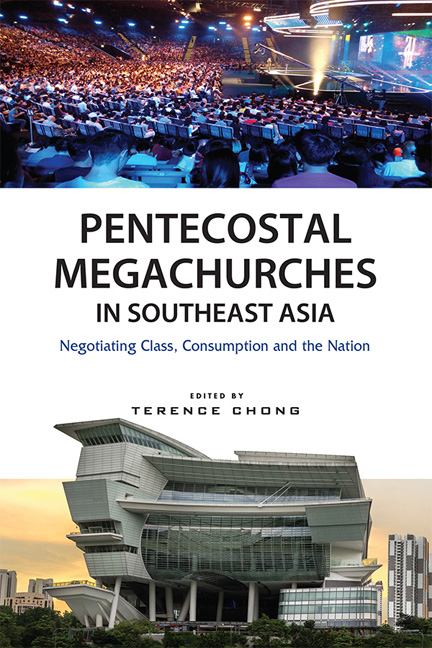Book contents
2 - Pentecostal Megachurches in Jakarta: Class, Local, and Global Dynamics
from Indonesia
Published online by Cambridge University Press: 04 July 2018
Summary
Introduction
With 87 per cent of its 238 million of its citizens claiming to be adherents of Islam, Indonesia has the largest Muslim population in the world. Surprisingly, this country is also one of the Southeast Asian nations experiencing fast growth in Christianity. Between 1971 and 2005, Indonesian Censuses reported that Christians, including both Protestants and Catholics, consistently represented between 7 and 8 per cent of the population. Scholars have argued that this figure was an understatement because the Indonesian government had a tendency to downplay the number of Christians to limit the perception among Muslims that they were faced with menacing Christianization.
The 2010 census showed that Protestants represented around 7 per cent and the Catholics comprised nearly 3 per cent of the population. This was a significant 2 to 3 per cent increase from previously reported figures. Due to the sensitive nature of such statistics, some argue that these 2010 figures might also have been underreported; the real number of Christians in Indonesia could have been much higher. Several senior Pentecostal leaders have claimed that around 20 and 5 per cent of Indonesia's population were Protestants and Catholics, respectively. Although these figures cannot be verified, they point to Christianity's undeniable exponential growth in Indonesia.
The rise of Christianity in Indonesia in recent decades can be mainly attributed to the Pentecostal and Charismatic megachurches that found fertile ground among the urban middle class. Although Indonesia was introduced to Pentecostalism from as early as 1921 by Western missionaries, rapid growth occurred only after the 1960s, at the arrival of the Charismatic, also known as the Neo-Pentecostal, movement, from the United States.
The oldest and at one time the largest Pentecostal denomination in Indonesia is the Pentecostal Church in Indonesia, or Gereja Pentekosta di Indonesia (GPdI). GPdI has recently declined in numbers due to various reasons, even though many of the rising Pentecostal denominations originated from GPdI and only became independent because of schisms. GdPI has experienced dozens of splits since the 1930s, and this has in turn brought into existence at least a hundred new Pentecostal churches. Reasons for these schisms include doctrinal disagreements, financial disputes, competition for growth among congregations, and personality clashes among leaders.
- Type
- Chapter
- Information
- Pentecostal Megachurches in Southeast AsiaNegotiating Class, Consumption and the Nation, pp. 21 - 46Publisher: ISEAS–Yusof Ishak InstitutePrint publication year: 2018

